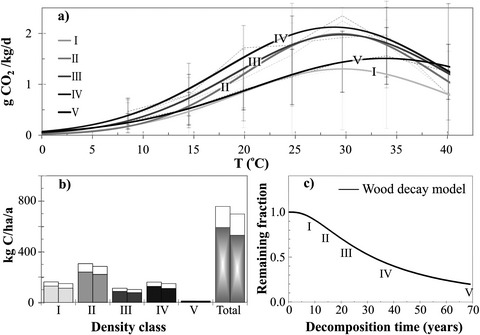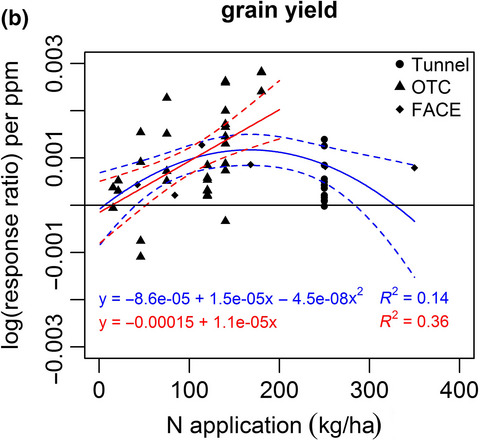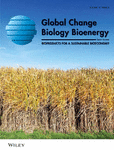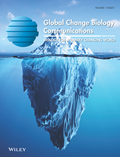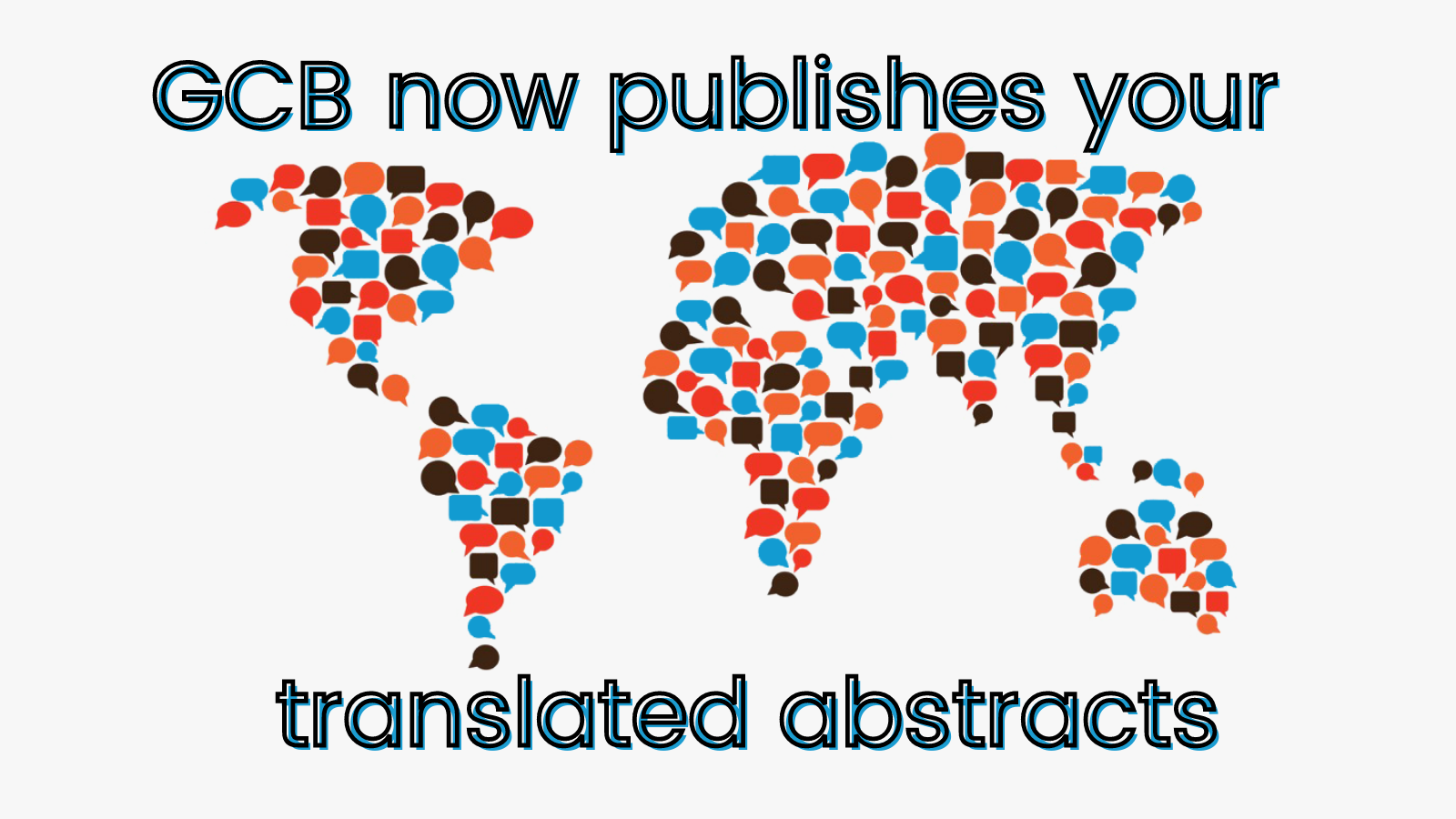Journal list menu
Export Citations
Download PDFs
ISSUE INFORMATION
OPINION
Refining predictions of population decline at species' rear edges
- Pages: 1549-1560
- First Published: 21 February 2019
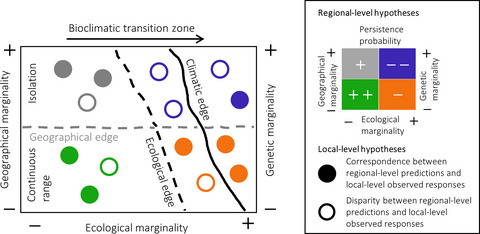
Climate change is expected to drive population loss at the species' rear edge, however, disparities between predictions and observations are accumulating. We argue for a revision of the concept of marginality together with an explicit testing of population decline across the species' rear edge, given the scale dependency of the ecological mechanisms determining population dynamics. Such progress is possible as data availability improves and is essential to better predict the consequences of species range shifts.
PRIMARY RESEARCH ARTICLES
Synergistic effects of climate and land-use change influence broad-scale avian population declines
- Pages: 1561-1575
- First Published: 27 February 2019
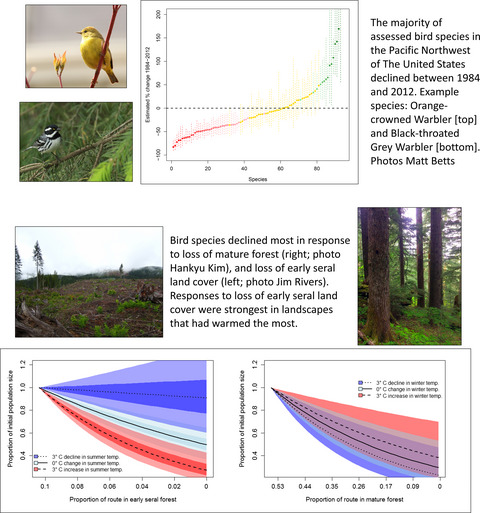
Birds in the Pacific Northwest of the United States declined most strongly in response to loss of mature forest, followed by loss of early seral forest. Declines from loss of mature forest were strongest in landscapes that had become drier over time and declines from loss of early seral forest were strongest in landscapes that had warmed over time. This is some of the first empirical evidence for synergistic effects of the two greatest threats to biodiversity and suggest the potential for underestimation of biodiversity declines from studies focusing on only climate or land-use change in isolation.
Land-sparing agriculture sustains higher levels of avian functional diversity than land sharing
- Pages: 1576-1590
- First Published: 22 February 2019
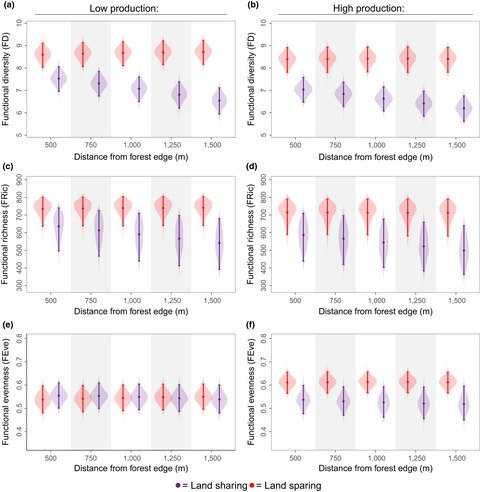
Using landscape and community simulations, we test the performance of land-sparing and land-sharing cattle pasture in conserving avian functional diversity of the Colombian Andes. We show that land-sparing agriculture conserves greater functional diversity and predicts higher abundance of species supplying key ecological functions than land sharing. To ensure the retention of functionally diverse ecosystems, we urgently need to implement mechanisms for increasing farmland productivity whilst protecting spared land.
Simulating rewetting events in intermittent rivers and ephemeral streams: A global analysis of leached nutrients and organic matter
- Pages: 1591-1611
- First Published: 09 January 2019
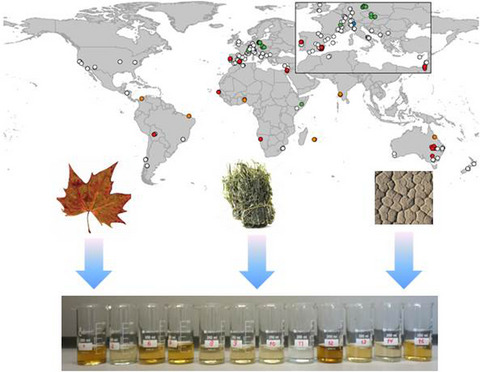
In this study we experimentally simulated under laboratory conditions rewetting of leaves, riverbed sediments, and epilithic biofilms collected during the dry phase from intermittent rivers and ephemeral streams covering global spatial scale. We determined the amounts and quality of the leached nutrients and dissolved organic matter, assessed their inter-substrate and cross-climate differences, and estimated areal fluxes from 1 m2 of riverbeds. In addition, we evaluated the variance in leachate characteristics related to selected environmental variables and substrate characteristics.
Structural and functional responses of invertebrate communities to climate change and flow regulation in alpine catchments
- Pages: 1612-1628
- First Published: 30 January 2019

We explored the structural and functional effects of climate change in interaction with flow regulation by comparing data collected in the 1970s and 2010s in regulated and unregulated alpine catchments of France. Divergent structural but convergent functional responses were found between free-flowing and regulated catchments. Although cold-adapted taxa decreased in both catchments, greater colonization of thermophilic species was detected in the free-flowing one, resulting in higher species turnover, and increased taxonomic diversity. The spread of new functional features to cope with climate change and the presence of tolerant taxa increased functional diversity but decreased functional redundancy in both catchments.
Four decades of plant community change along a continental gradient of warming
- Pages: 1629-1641
- First Published: 12 January 2019
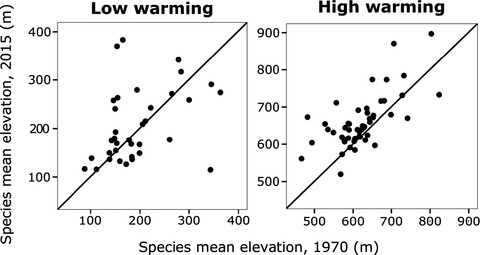
In this study, we resurveyed forest vegetation plots 40 years after the initial surveys in three protected areas along a west-to-east gradient of increasingly steep recent warming trends in eastern Canada. We found an increasing magnitude of changes in species richness and composition from west to east among the three parks. We found no significant changes in elevational species’ distributions where warming has been minimal, and significant upward distribution shifts where the recent warming trend has been marked.
Predator-mediated effects of severe drought associated with poor reproductive success of a seabird in a cross-ecosystem cascade
- Pages: 1642-1652
- First Published: 17 February 2019
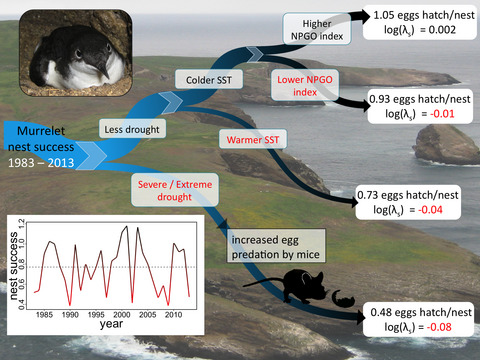
Seabirds are often heralded as sentinels of ocean climate variability and change. In this study, however, we found that Scripps's Murrelet nest success since the 1980s in southern California was mainly associated with a different hallmark of climate variability, the severity of drought. Specifically, our results support the hypothesis that climate-driven changes in terrestrial productivity influence murrelet nest success via increased egg predation by an endemic deer mouse during severe drought conditions. Nest success was much higher under normal or high rainfall conditions and was highest when oceanic conditions were favorable to murrelets.
Carbon consequences of drought differ in forests that resprout
- Pages: 1653-1664
- First Published: 08 February 2019
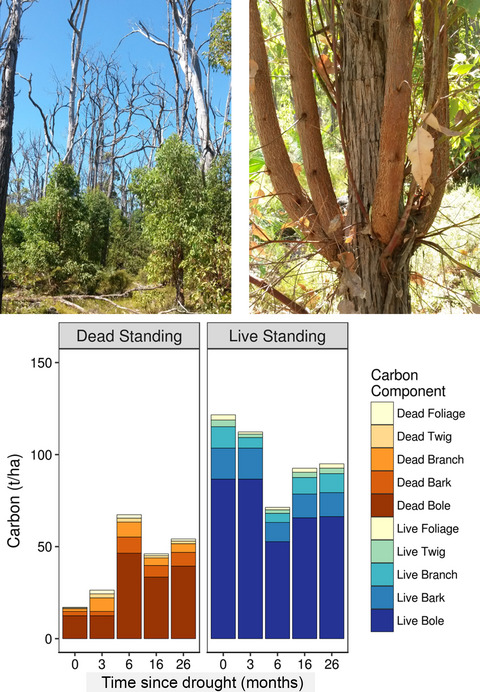
We quantified carbon storage dynamics following a drought-induced die-off in a resprouting forest. We found a significant loss (49.3 t ha−1) of live carbon and accumulation of dead material in affected stands following die-off. Of the persisting live trees, 38% experienced partial mortality contributing to rapid regrowth and replenishment (82%–88%) of labile carbon pools (foliage, twigs, and branch) within 26 months. However, future fire may threaten persistence of both dead and live pools via combustion and mortality of live tissue and impaired regrowth capacity. Our work questions the previously assumed stability of these carbon stores.
Range size and growth temperature influence Eucalyptus species responses to an experimental heatwave
- Pages: 1665-1684
- First Published: 12 February 2019
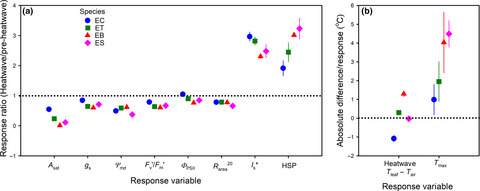
Populations of four Eucalyptus species, two with large range sizes and two with comparatively small range sizes, were grown under two temperature treatments (cool and warm) before being exposed to an experimental heatwave. Visible heatwave damage was more common and severe in the species with small rather than large range sizes. Measurements of leaf gas-exchange, isoprene emissions, respiratory thermotolerance, and proteomic responses provided new insights into the mechanisms underlying differences in tree species heatwave tolerance. Surprisingly, warm-grown trees were more susceptible to heatwave damage than cool-grown trees, which could be associated with reduced enzyme requirements for growth at warm temperatures.
Overcoming prey naiveté: Free-living marsupials develop recognition and effective behavioral responses to alien predators in Australia
- Pages: 1685-1695
- First Published: 01 March 2019
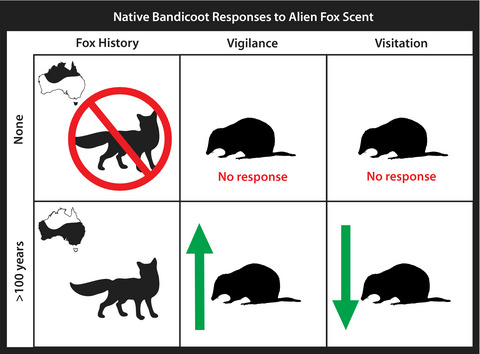
We asked how naiveté changes for mammal prey in Australia where alien predators are linked to >20 mammal extinctions. We found that bandicoots in areas where foxes have never occurred show no recognition responses to cues of alien fox presence and appear to be naïve to the predation threat posed by foxes upon first encounter. In contrast, bandicoots in areas where foxes have been abundant for >100 years showed recognition and appropriate antipredator behavior (increased vigilance and avoidance) towards fox odor. These results suggest that naiveté can be overcome within a relatively short time-frame, driven by eco-evolutionary experience with predators.
Short photoperiod reduces the temperature sensitivity of leaf-out in saplings of Fagus sylvatica but not in horse chestnut
- Pages: 1696-1703
- First Published: 19 February 2019
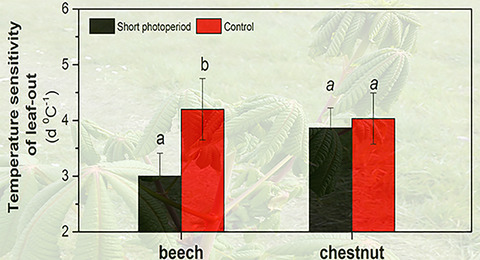
Shorter photoperiod significantly reduced the temperature sensitivity of beech saplings (3.0 days/°C), after a photoperiod- and temperature-manipulation experiment, and interestingly the photoperiod limitation only occurs below a certain daylength. In contrast, for chestnut, no photoperiod threshold was found even when the ambient air temperature was warmed by 5°C. Given the species-specific photoperiod effect on leaf phenology, the sequence of the leaf-out timing among forest tree species may change under future climate warming conditions.
Volatile emissions from thawing permafrost soils are influenced by meltwater drainage conditions
- Pages: 1704-1716
- First Published: 25 February 2019
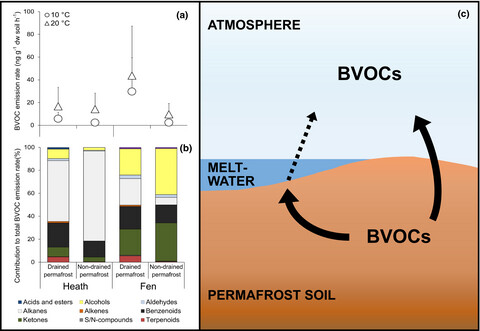
Across the Arctic, climate warming accelerates thawing of permafrost soils. As a result, previously frozen soil organic matter is being exposed to microbial decomposition and in this process biogenic volatile organic compounds (BVOCs) are released. We investigated how meltwater drainage conditions influence the net BVOC emission in permafrost soils from a heath and a fen ecosystem. Meltwater drainage of the dry heath permafrost soils had no effect on emissions, while drainage of the wet fen permafrost soils increased emissions nine-fold. These results show that volatile emissions from thawing permafrost soils depend on both permafrost ice content and meltwater drainage conditions.
Valuing urban green spaces in mitigating climate change: A city-wide estimate of aboveground carbon stored in urban green spaces of China's Capital
- Pages: 1717-1732
- First Published: 06 January 2019
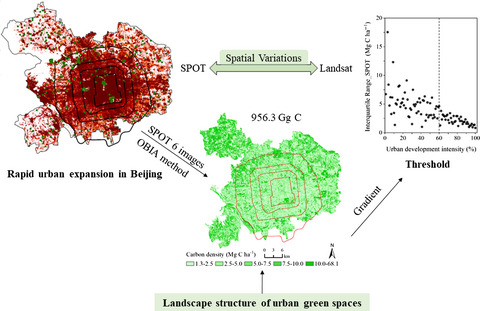
Urban green spaces have great potential to make contribution to mitigating against future climate change if we plan and design urban green spaces following the trajectory of high carbon density, but we should be aware that such potential will be very limited when the urban development reaches certain intensity threshold.
Multiscale climate change impacts on plant diversity in the Atacama Desert
- Pages: 1733-1745
- First Published: 31 January 2019
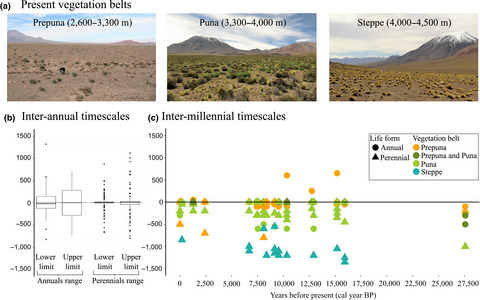
Comprehending ecological dynamics requires not only knowledge of modern communities but also detailed reconstructions of ecosystem history. In this study, we compared long-term records of Atacama Desert plant biodiversity preserved in fossils to interannual variations in diversity. In the interannual (years to decades) time frame, only annual herbaceous expand and contract their distributional ranges in response to precipitation. In contrast, at longer timescales (thousands of years) many perennial and annual species were displaced up to 1,000 m downslope during pluvial events. Our results show how plant communities have responded to past climate change and could help predict how they may respond in the future.
Ecosystem carbon response of an Arctic peatland to simulated permafrost thaw
- Pages: 1746-1764
- First Published: 25 January 2019
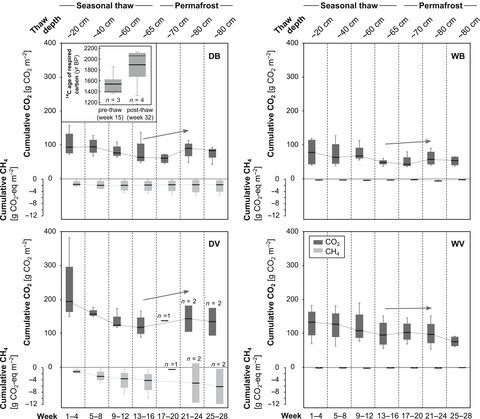
Permafrost peatlands are biogeochemical hot spots in the Arctic as they store vast amounts of carbon. Permafrost thaw could release part of these long-term immobile carbon stocks as the greenhouse gases (GHGs) carbon dioxide (CO2) and methane (CH4) to the atmosphere, but how much, at which time-span and as which gaseous carbon species is still highly uncertain. A novel experimental approach using intact plant–soil systems (mesocosms) allowed us to simulate permafrost thaw under near-natural conditions. We show here that peatlands may strengthen the permafrost–carbon feedback by adding to the atmospheric CO2 burden post-thaw.
Denitrification as a major regional nitrogen sink in subtropical forest catchments: Evidence from multi-site dual nitrate isotopes
- Pages: 1765-1778
- First Published: 18 February 2019
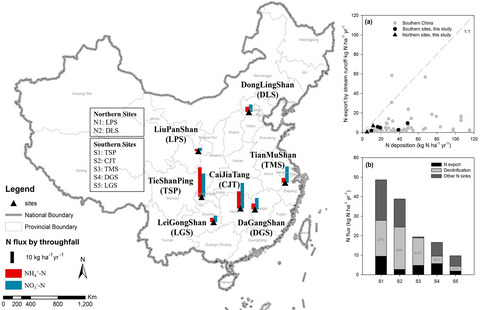
Forests in South China receive high loads of atmospheric N deposition, which causes significant nitrate leaching from soils. However, at the catchment level, moderate N export by stream runoff indicates strong N removal. We conducted a regional study with N fluxes over 2 years and dual nitrate isotopic signatures in two summers across seven forested catchments. Our findings suggest that denitrification in groundwater discharge zones is an important N sink in subtropical forests. Model estimates indicate that denitrification scales with N deposition, highlighting the role of natural forests in counteracting aggravated N pollution in the region.
Decoupled trophic responses to long-term recovery from acidification and associated browning in lakes
- Pages: 1779-1792
- First Published: 30 January 2019
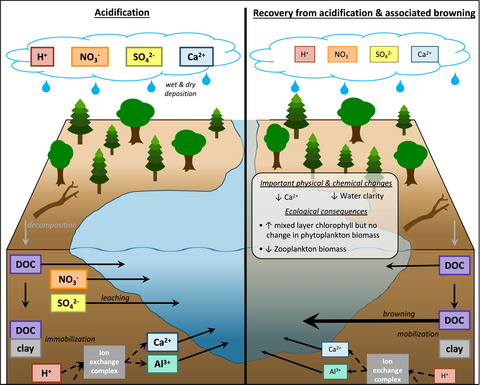
Increases in dissolved organic matter (DOM) have been documented in many inland waters recovering from acidification, a process known as ‘browning’. However, browning occurs concomitant with other ecologically important water chemistry changes that may interact with or overwhelm any potential ecological response to browning. Using a long-term dataset, we found that changes in the primary producers are likely driven by reduced water clarity due to browning, independent of changes in nutrients, but that declines in calcium play an important role in driving declines in zooplankton biomass. Trophic level responses to acidification-recovery induced browning are decoupled from one another.
Temperature sensitivity of biomass-specific microbial exo-enzyme activities and CO2 efflux is resistant to change across short- and long-term timescales
- Pages: 1793-1807
- First Published: 26 February 2019
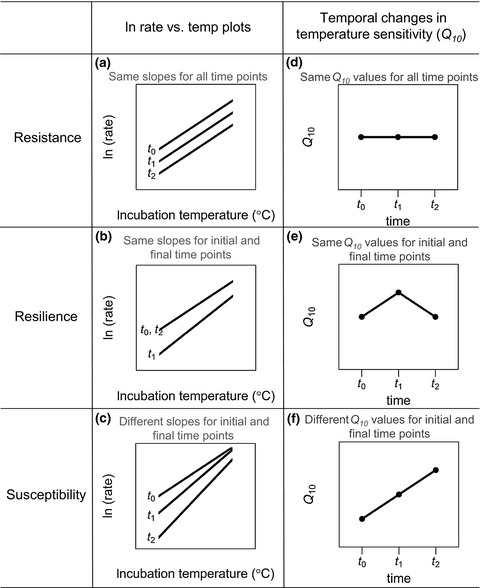
We investigated how microbial temperature responses vary across timescales and what mechanisms drive such temporal patterns. We demonstrated that biomass-specific rates of exo-enzyme activities and CO2 effluxes exhibited resistant temperature sensitivities across time, in spite of changing microbial community composition with exposure to short- and long-term exposure to different temperature regimes. Those expressed as soil mass-specific rates exhibited resistance or resilience depending on the flux rate assessed.
Different effects of alpine woody plant expansion on domestic and wild ungulates
- Pages: 1808-1819
- First Published: 08 February 2019
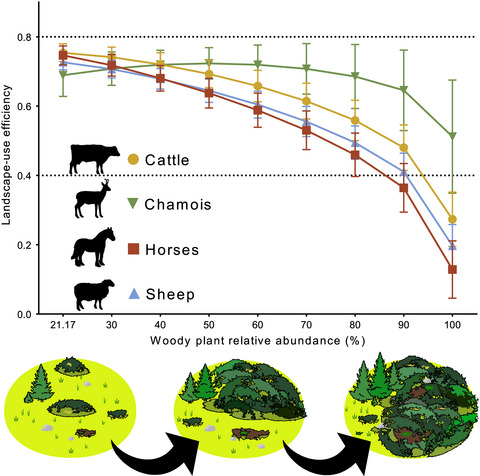
Climatic and land-use changes are leading to shrub expansion in alpine grasslands. In this work, we address whether wild and domestic herbivores under varying conditions of resource availability will be able to use efficiently their foraging landscape. We found that “shrubification” affects herbivores differently depending on their feeding preferences and plasticity. Mixed feeders will manage better in fallow landscapes but free-ranging livestock will be less efficient, highlighting a growing economic risk for mountain livestock farmers worldwide.
Effects of mesophyll conductance on vegetation responses to elevated CO2 concentrations in a land surface model
- Pages: 1820-1838
- First Published: 26 February 2019
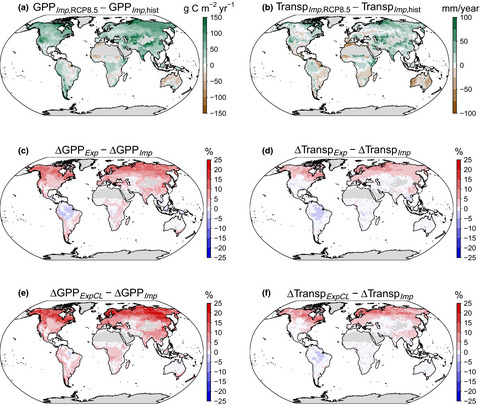
We make use of an extensive literature compilation of gm across major vegetation types to implement an empirical representation of gm into the land surface model JSBACH and investigate its effects on carbon and water fluxes at the leaf to global scales. We show that gm changes the response of photosynthesis to environmental factors, which leads to an altered photosynthetic sensitivity to CO2 depending on both the magnitude of gm and climatic conditions. Globally, gm caused considerable increases in gross primary productivity of +5% to +15% in the boreal zone, but only minor changes (−2% to +5%) in the tropics.
Effects of climate warming on carbon fluxes in grasslands— A global meta-analysis
- Pages: 1839-1851
- First Published: 25 February 2019
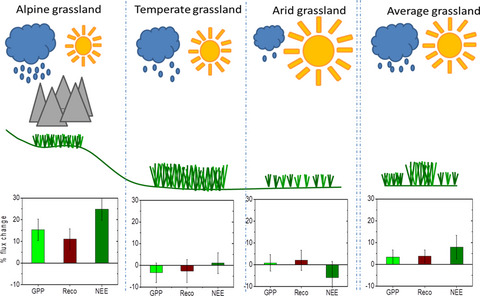
Our meta-analysis revealed that experimental warming stimulated C fluxes in grassland ecosystems with regard to both plant production and soil respiration. However, the magnitude of C flux stimulation varied significantly across cold, temperate and semi-arid grasslands, in that responses for most C fluxes were larger in cold than temperate or semi-arid ecosystems. Averaging over all grassland data, C flux response rates did not represent any of the three grassland types.
Carbon flux from decomposing wood and its dependency on temperature, wood N2 fixation rate, moisture and fungal composition in a Norway spruce forest
- Pages: 1852-1867
- First Published: 15 February 2019
Nitrogen application is required to realize wheat yield stimulation by elevated CO2 but will not remove the CO2-induced reduction in grain protein concentration
- Pages: 1868-1876
- First Published: 08 February 2019
TECHNICAL ADVANCE
Investigating marine bio-calcification mechanisms in a changing ocean with in vivo and high-resolution ex vivo Raman spectroscopy
- Pages: 1877-1888
- First Published: 28 January 2019
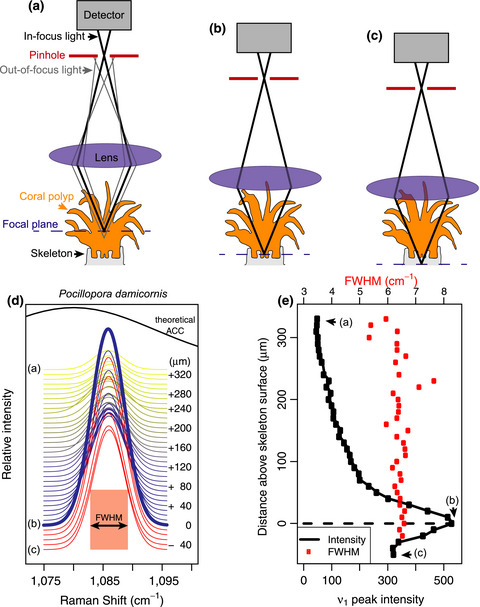
Newly developed in vivo and high-resolution Raman spectroscopy analyses of marine calcifying organisms enable characterization of their mineralogy and calcification mechanisms. Insights from these new Raman spectroscopy tools are helping us understand the sensitivity of these important organisms to ocean warming and acidification.





